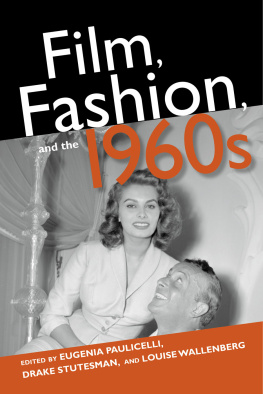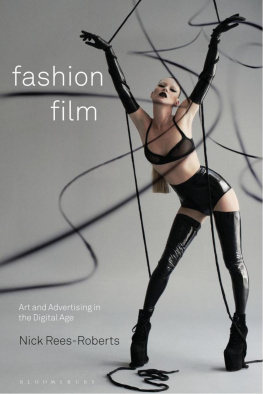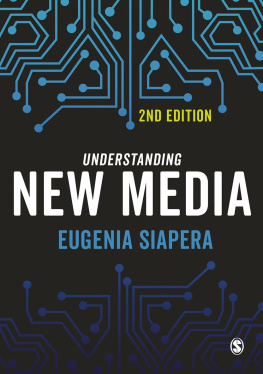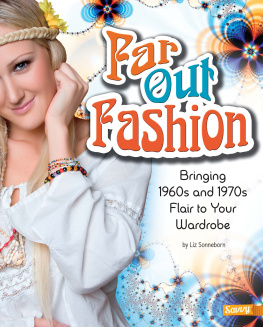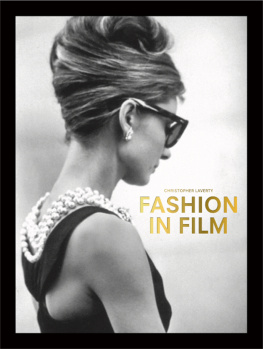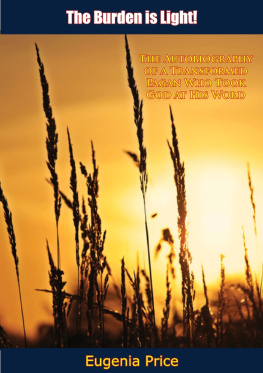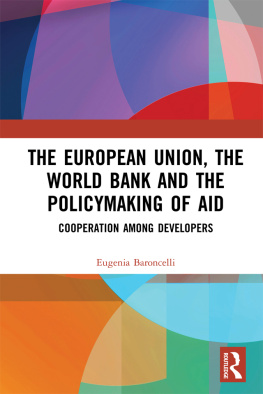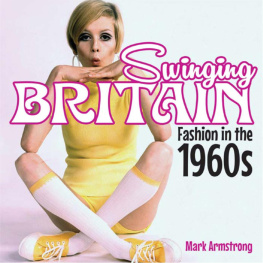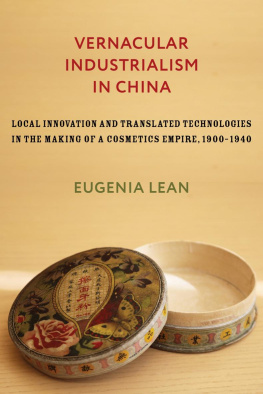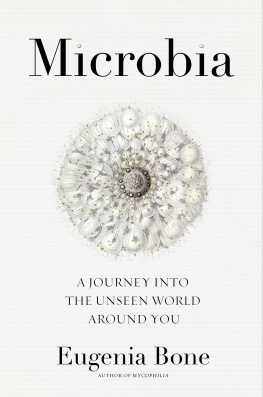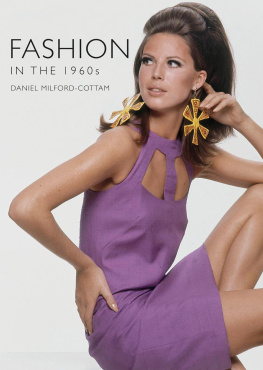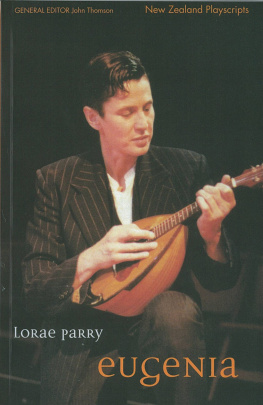Eugenia Paulicelli - Film, Fashion, and the 1960s
Here you can read online Eugenia Paulicelli - Film, Fashion, and the 1960s full text of the book (entire story) in english for free. Download pdf and epub, get meaning, cover and reviews about this ebook. year: 2017, publisher: Indiana University Press, genre: Romance novel. Description of the work, (preface) as well as reviews are available. Best literature library LitArk.com created for fans of good reading and offers a wide selection of genres:
Romance novel
Science fiction
Adventure
Detective
Science
History
Home and family
Prose
Art
Politics
Computer
Non-fiction
Religion
Business
Children
Humor
Choose a favorite category and find really read worthwhile books. Enjoy immersion in the world of imagination, feel the emotions of the characters or learn something new for yourself, make an fascinating discovery.
- Book:Film, Fashion, and the 1960s
- Author:
- Publisher:Indiana University Press
- Genre:
- Year:2017
- Rating:4 / 5
- Favourites:Add to favourites
- Your mark:
- 80
- 1
- 2
- 3
- 4
- 5
Film, Fashion, and the 1960s: summary, description and annotation
We offer to read an annotation, description, summary or preface (depends on what the author of the book "Film, Fashion, and the 1960s" wrote himself). If you haven't found the necessary information about the book — write in the comments, we will try to find it.
Film, Fashion, and the 1960s — read online for free the complete book (whole text) full work
Below is the text of the book, divided by pages. System saving the place of the last page read, allows you to conveniently read the book "Film, Fashion, and the 1960s" online for free, without having to search again every time where you left off. Put a bookmark, and you can go to the page where you finished reading at any time.
Font size:
Interval:
Bookmark:

FILM, FASHION, AND THE 1960s
FILM, FASHION, AND THE 1960s
Edited by Eugenia Paulicelli, Drake Stutesman, and Louise Wallenberg
Indiana University Press
This book is a publication of
Indiana University Press
Office of Scholarly Publishing
Herman B Wells Library 350
1320 East 10th Street
Bloomington, Indiana 47405 USA
iupress.indiana.edu
2017 by Indiana University Press
All rights reserved
No part of this book may be reproduced or utilized in any form or by any means, electronic or mechanical, including photocopying and recording, or by any information storage and retrieval system, without permission in writing from the publisher.
The paper used in this publication meets the minimum requirements of the American National Standard for Information SciencesPermanence of Paper for Printed Library Materials, ANSI Z39.48-1992.
Manufactured in the United States of America
Library of Congress Cataloging-in-Publication Data
Names: Paulicelli, Eugenia, 1958- editor. | Stutesman, Drake editor. | Wallenberg, Louise editor.
Title: Film, fashion, and the 1960s / edited by Eugenia Paulicelli, Drake Stutesman, and Louise Wallenberg.
Description: Bloomington : Indiana University Press, 2017. | Includes bibliographical references and index.
Identifiers: LCCN 2017023249 (print) | LCCN 2017037128 (ebook) | ISBN 9780253026415 (e-book) | ISBN 9780253025593 (cloth : alk. paper) | ISBN 9780253026101 (pbk. : alk. paper)
Subjects: LCSH: Motion picture actors and actressesClothing. | Fashion in motion pictures. | Motion picturesHistory20th century.
Classification: LCC PN1995.9.C56 (ebook) | LCC PN1995.9.C56 F545 2017 (print) | DDC 791.4302/6dc23
LC record available at https://lccn.loc.gov/2017023249
1 2 3 4 5 22 21 20 19 18 17
The editors would like to dedicate this collection to the spirit of the 1960s.
Contents
Acknowledgments
T HE FIRST SEEDS for this volume were planted in March 2010 at an international one-day symposium initiated by Louise Wallenberg and Eugenia Paulicelli and coorganized by the Centre for Fashion Studies at Stockholm University and the Fashion Studies programs at the Graduate Center of the City University of New York. The intent of the symposium was to revisit the pioneering and iconic era of the 1960s through fashion and film on the occasion of the eras fiftieth anniversary. The symposium was accompanied by a multimedia exhibition curated by Eugenia Paulicelli and entitled Fashion + Film: the 1960s Revisited, which included photographs, stills, costume sketches, and actual costumes from the 1960s.
The symposium also opened up a dialogue with scholars who had not taken part in the conference but were later contacted in order to add their voices to the topics we discussed and to give a more multinational dimension to the volume. In the process of editing the anthology and creating a coherent structure, Drake Stutesman was invited in 2013 to join the team to share the work, reenergize the collection, and refine its content.
This book would not have been possible without the enthusiasm of the staff at Indiana University Press, particularly the editors Raina Nadine Polivka and Janice Frisch and their close attention, and the detailed, thorough comments from the anonymous external readers of the proposal and manuscript. As editors and authors, we have been very grateful for the support, attention, and guidance we have enjoyed throughout this long process of sharing and dialogue, particularly important for a volume of collected essays containing different voices and edited by those who live and work in different continents. Our heartfelt thanks go out to all the contributors for their hard work and the patience they have shown throughout the different stages.
In particular, the editors would like to thank: the Center for the Humanities, the Fashion Studies (MALS and PhD Concentration) and the PhD program in Comparative Literature, and the Womens Studies Certificate program at the Graduate Center of the City University of New York; the students at Queens College and the Graduate Center; the graduate students and colleagues at the Center for Fashion Studies at Stockholm University; the Costume Design in Film students in the Cinema Studies program at New York University; Stiftelsen Bergmangrdarna on Fr, Sweden; Adriana Berselli; Patrizia Calefato; Nancy Deihl; Jane Gaines; and Torkild Thanem, David Ward, and Anna Ward for their unwavering support.
Notes
. The symposium received generous funds from Stockholm University and from the Center for the Humanities at the City University of New York Graduate Center, and for this, we are grateful.
. Our invited speakers covered topics that ranged from the collaboration between Jean-Luc Godard and costume designer Christiane Fageol in Paris in the 1960s to the outspoken fashion nationalism in romantic American 1960s films and the role of fabric in the texture of cinematic mise-en-abyme of identity in Alfred Hitchcocks work.
FILM, FASHION, AND THE 1960s
Introduction
Eugenia Paulicelli and Louise Wallenberg
T HOMAS, THE PHOTOGRAPHER in Michelangelo Antonionis film Blow-up, played by David Hemmings, epitomizes the spirit of the 1960s. He wears narrow white jeans and a tight shirt as he wanders restlessly through London parks or streets documenting the lives of homeless people, while also working on a fashion shoot in his studio with the glamorous real-life model Veruschka. By blurring the boundaries of photographic genres with other arts and ways of seeing, as well as engaging with the way fashion and youth culture revolutionized social, personal, and political hierarchies, Blow-up remains the film of the period of transformations in society, culture, and media that was the 1960s. Indeed, it was in the 1960s that, against the background of political unrest and protest, the youth became a new protagonist of social change.
The decade of the 1960s was marked by the culmination of the Marshall Plan, also known as the European Recovery Program, a program that provided aid to a continent wreaked by the havoc of World War II. This plan for economic aid, proposed by the US Secretary of State, General George C. Marshall, contributed massively to the reconstruction of Europes economies and brought with it a more general Americanization and hybridization of European societies. Against such a background of political change and unrest, this volume seeks to explore some of the important cultural phenomena that impacted film, music, fashion, and other manifestations of culture in the 1960s, especially the shift in boundaries between popular and high cultures. The blurring of boundaries was apparent not only in a number of institutions, including the family, schools, the workplace, but also in gender relations. This cultural shift was also borne out through the emergence of industries that catered to the new tastes of the era, such as ready-to-wear clothing and street styles. These changes in fashion were often linked to the youth rebellions, protest movements, and pop music of the 1960s and are now considered iconic markers of the period.
At the core of this volume is the question of how and why the year 1960 was so foundational for Western and Eastern aesthetics, politics, and culture. The groundbreaking films of the decadesuch as La Dolce Vita, bout de souffle, LAvventura, Persona, Clo de 5 7, Breakfast at Tiffanys, and Psychobrought with them a revolution in cinematic language and representation that reconfigured time and space and transformed perceptions of reality. Hand in hand with this new kind of filmmaking and film representation that changed the world of cinema, the fashion of the 1960s offered a break with that which came beforeboth as a hierarchical economic system and as an aesthetic expression. Interestingly, not all of the must-see films mentioned above have been revisited through the critical lens of fashion, a perspective that, we argue, allows us to see the cinematic innovations of the period in a new way. It was out of innovation in both fashion and film that a new aesthetic and politics of style were born, redefining cultural and social class boundaries and age hierarchies in an urban environment that was undergoing huge economic and political transformations. Fashion materialized these changes in society and addressed them cinematically.
Next pageFont size:
Interval:
Bookmark:
Similar books «Film, Fashion, and the 1960s»
Look at similar books to Film, Fashion, and the 1960s. We have selected literature similar in name and meaning in the hope of providing readers with more options to find new, interesting, not yet read works.
Discussion, reviews of the book Film, Fashion, and the 1960s and just readers' own opinions. Leave your comments, write what you think about the work, its meaning or the main characters. Specify what exactly you liked and what you didn't like, and why you think so.

